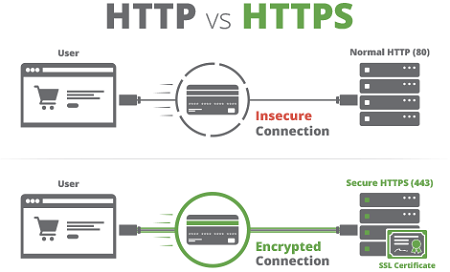
When Google released Chrome 68, one of the most talked about features was the use of the HTTPS security notification, letting the user know that the website is secured and therefore relatively safe to visit. Additionally, Google began to warn users when a site was unsecured, causing the majority of users to avoid the site altogether. So what can you do to ensure users feel confident their personal data will be safe? Enter the Security Socket Layer or SSL.
What is a Security Socket Layer or SSL?
The SSL is a standard security technology for establishing an encrypted link between a web server and a browser. This link ensures that all data passed between the two remains private, making it more difficult for cyber criminals to read or modify any information, including potential personal details. SSL was developed in the early 1990s and went through several updates. In 1999, a new version renamed the protocol to TLS (Transport Layer Security).
Why is SSL/TLS Important?
With a plethora of security breaches, stolen identities and phishing, today’s customer has become increasingly skeptical and weary of providing personal information online. Today, the average consumer uses the Internet as a research tool and first point of contact with many businesses. An SSL/TLS distinction is the way Google (and other browsers) let users know that their information is encrypted and therefore more difficult to steal.
Additionally, Google favors sites with SSL/TLC certificates and therefore an HTTPS greatly increases the chances of users being able to find your website in the first place. Without an SSL certificate, your bounce rate will increase and provided that a user is even able to find your website, converting potential customers will be extremely difficult.
How Does SSL/TLS Work?
SSL/TLS can be difficult and complicated to understand, however in summery it works like this – a consumer or prospect finds your website online and clicks on the link. Google (or another browser) warns the user that your site is not secured and therefore their personal information may be open to attack. Chances are the user will move to another website.
As long as you have an SSL/TLS certificate, it means your site is much safer for users to visit and share their personal information with you. With HTTPS, they can safely fill out a contact form or purchase a product through your site. Amazingly enough, many sites have not caught on to the importance of a security certificate. In an audit conducted by Wired.com in 2016, 79 of the web’s top 100 non-Google sites didn’t use an HTTPS by default with 67 of those using either outdated security technology or none at all.
How Do I Get an SSL/TLC Certificate?
So now you’re probably worried about your site, asking yourself how difficult and expensive will it be to obtain an SSL/TLC certificate for my website?
Fortunately, it’s easier than you probably think. The best way to start is to contact your IT support experts. They will set you up with an SSL/TLS certificate to make sure your site is secure and your consumers are confident they will be safe visiting your site. Don’t have an IT expert available? – no problem… We’re here to help!
That wasn’t too difficult was it?